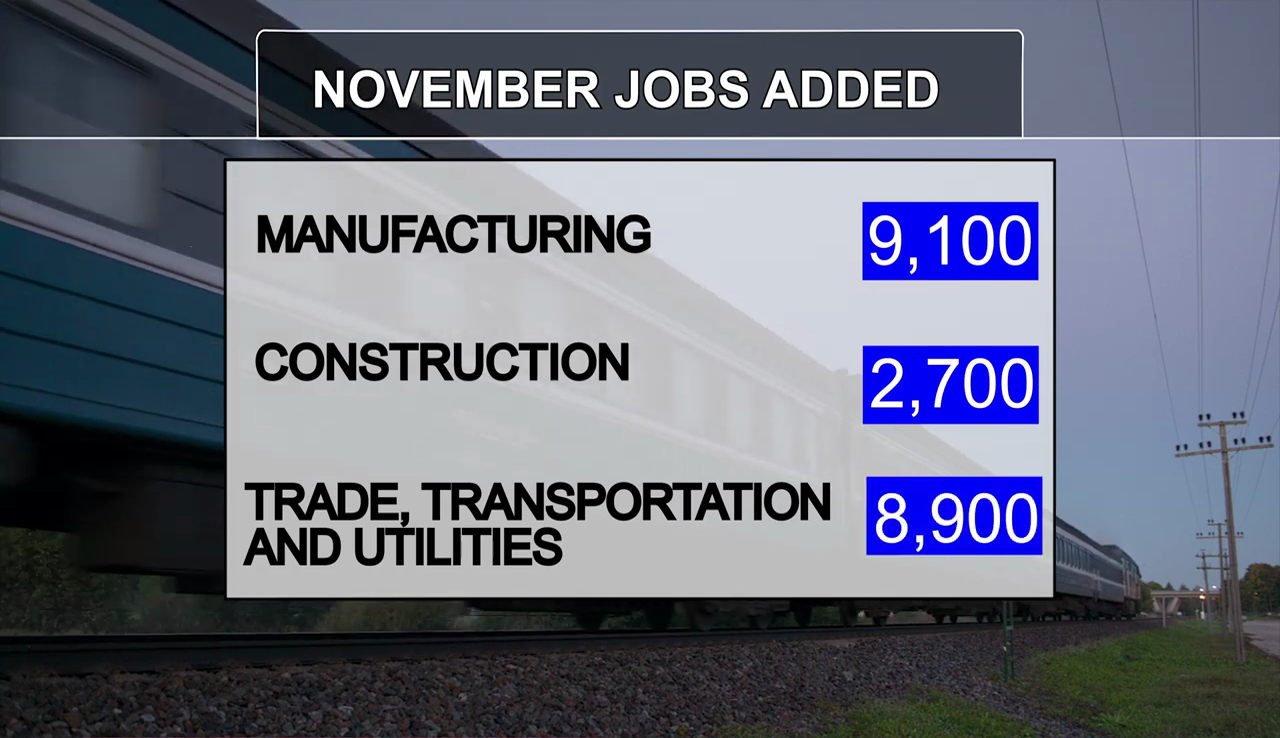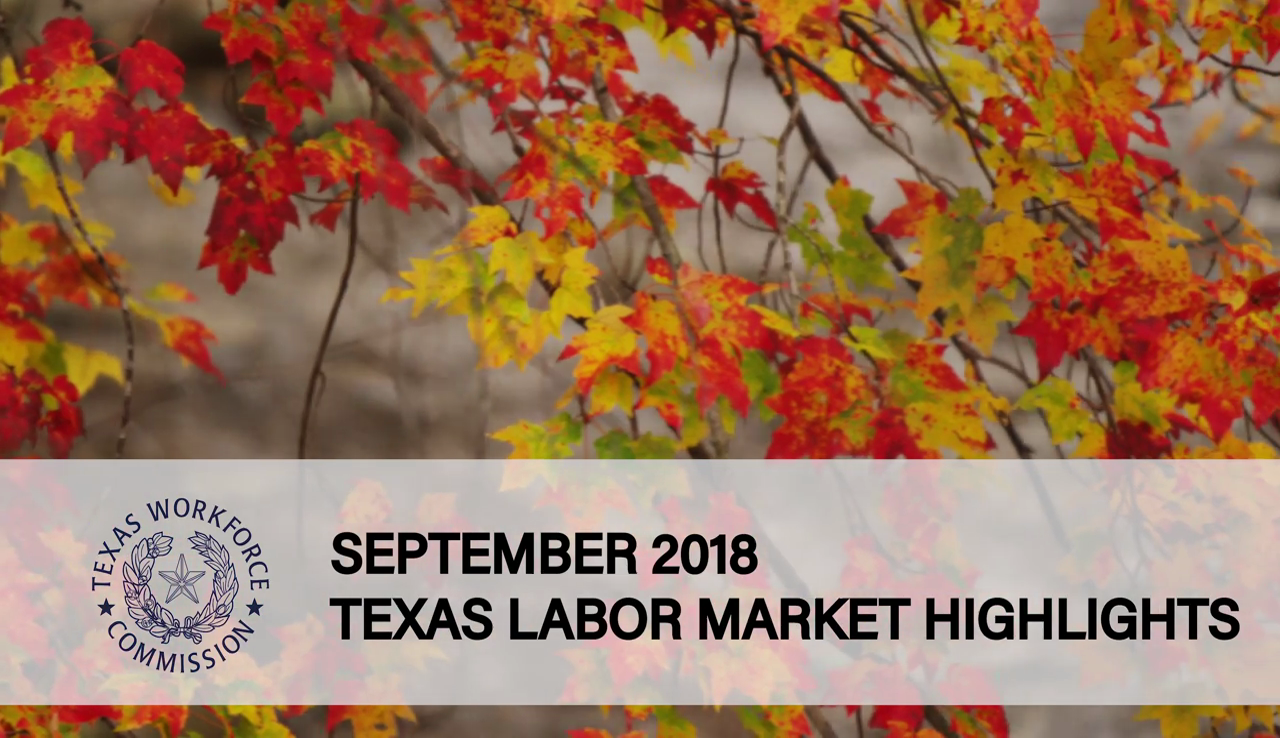
One of the most looked at and talked about economic indicators is the Unemployment Rate. Generally speaking, an economy with a low unemployment rate is considered to be in good shape. An economy with a higher unemployment rate is considered to need improvement.
In May and June 2019 the unemployment rate in Texas was 3.4 percent, a record low going back to 1976. That’s good! In April 2020, largely due to COVID-19 and measures taken to slow its spread, the unemployment rate spiked to 12.9 percent. Record high. Not good. In March 2021, the rate was still elevated at 6.9 percent, but clearly improving.
But what are we talking about here? Where does this number come from? How is the Texas unemployment rate calculated? What information is the unemployment rate based on?
3 Things that Make Up the Unemployment Rate
- Unemployed population (UNEMP): Texans who are currently looking for employment
- Employed population (EMP): Texans who are currently employed
- Civilian Labor Force (CLF): The total sum of the Unemployed and Employed populations
How We Calculate Unemployment Rate:
There are two steps to calculate Texas’ unemployment rate, using the above information:
- Civilian Labor Force = Unemployed Population + Employed Population
- (Unemployed Population ÷ Civilian Labor Force) x 100* = Unemployment Rate
The Unemployment Rate changes each month, as more people enter the workforce, leave the workforce, become unemployed, or become employed.
Who makes up Texas’ Employed Population?
Texas’ Employed Population (EMP) contains people who are:
- currently employed
- at least 16 years old
- not on active duty
- not in a nursing home or a prison or otherwise institutionalized
Who makes up Texas’ Unemployed Population?
Texas’ Unemployed Population (UNEMP) contains people who are:
- currently seeking employment
- at least 16 years old
- not on active duty
- not in a nursing home or a prison or otherwise institutionalized
How We Determine Who Is Included in the Unemployment Rate
Simply put, the unemployment rate only contains people who fit into the Civilian Labor Force (CLF):
- People over 16 who are
- Employed or
- Actively seeking employment
Does the Civilian Labor Force (CLF) Equal Every Texan? Does the Unemployment Rate Include Every Texan?
No. The CLF is Not Everybody. Therefore, the unemployment rate does not include every Texan because the unemployment rate can only be calculated from people who are employed or actively looking for employment.
It’s not your retired war veteran uncle who lives in Ft Lauderdale.
It’s not your 10-year-old daughter who just got braces and wants to be an astronaut.
And if you (yes, you) are enjoying some time off right now before you jump back into the job market, then it’s not you, either.
Everyone in the CLF right now either has a job or wants one badly enough to look, right now.
Show Me the Data – Where do the numbers really come from?
But how do we determine how many people are in the CLF? And how do we determine how many of those are EMP and how many are UNEMP?
The U.S. Government has two principle ways of gathering information about large populations of people:
- The Census
- Surveys.
A survey involves getting information from a few people in a population and using probabilities to allow their responses to represent what is likely the case for the rest of the population.
A good example is the U.S. Government’s Current Population Survey (CPS), which is conducted every month by the U.S. Census Bureau on behalf of the U.S. Bureau of Labor Statistics (BLS). This is the main source used for calculating the unemployment rate. The CPS covers a multitude of topics, including the respondent’s relationship to the labor force. About 60,000 households nationwide receive the CPS every month.
The labor force-related section of the CPS is 45 pages long and consists of more than 200 questions. That might seem overwhelming but sophisticated skip patterns use the responses to several questions to ensure respondents are asked only a small set of questions about themselves. Averaged over eight months of interviews, the labor force section of the CPS interview lasts about six minutes per person.
Want to see what that labor force section of the CPS looks like? Check it out here.
Based on the answers provided to the labor force questions in the CPS, data collectors can determine 1) whether a person is a part of the CLF, and 2) whether they should be classified as EMP or UNEMP. The numbers that result from the CPS, including CLF, EMP, UNEMP, and URATE, are estimates. Like many estimates that come from surveys, they are subject to revision.
What does this mean for me?
First, it means that when you look at the URATE released every month by the Texas Workforce Commission or another state workforce agency or BLS, you can be confident that it is based on real information gathered from real people across Texas and across the country.
Second, it means that if you ever receive a Current Population Survey from BLS, and you well may, then you would be doing yourself and your state and nation a great service by providing the information requested. It takes mere minutes, is completely confidential, and it does make a difference.
For more information, visit the Local Area Unemployment Statistics Home Page (bls.gov).
Takeaways
As you can see, the unemployment rate is a valuable number that tells a specific story when it is released each month. It is not just a percentage of the population that is not working. It is a percentage of the 16-and-over population that, had they their druthers, would have a job right now, but unfortunately does not.
* Multiplying by 100 is necessary to convert the decimal number to a percentage.











